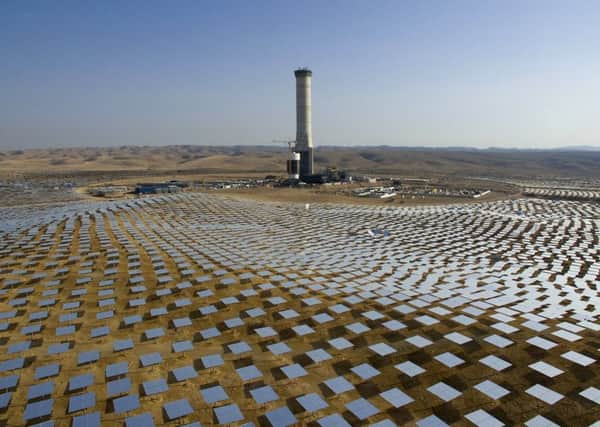Israeli renewables get boost with plans for giant solar tower


With Israel traditionally running its economy on fossil fuels, renewable energy has long been hobbled by bureaucracy and a lack of incentives.
But the country is starting to make an effort, setting a goal of generating ten per cent of its energy from renewable sources by 2020, up from the current 2.5 per cent.
Advertisement
Hide AdAdvertisement
Hide AdThe Ashalim project, deep in the Negev desert, is made up of three plots, with a fourth planned for the future, each with a different solar technology.
Together, the fields will be Israel’s largest renewable energy project when completed by 2018.
They are set to generate some 310 megawatts of power, about 1.6 per cent of the country’s energy needs – enough for about 130,000 households, or roughly 5 per cent of Israel’s population, according to the country’s electricity authority.
“It’s the most significant single building block in Israel’s commitment to CO2 reduction and renewable energy,” said Eran Gartner, chief executive of Megalim Solar Power Ltd, which is building one part of the project.
The centerpiece is a solar tower that will be the world’s tallest at 250 metres (820 feet).
Solar towers use a method differing from the more common photovoltaic solar panels, which convert sunlight directly into electricity.
Instead, towers use a solar-thermal method, through which thousands of mirrors focus the sun’s rays, heating a boiler that creates steam to spin a turbine and generate electricity.
Encircling the Ashalim tower are 50,000 mirrors, known as heliostats. The tower is tall because the panels were squeezed together to maximize use of the land. The closer the panels, the taller the tower must be, Mr Gartner said.
Advertisement
Hide AdAdvertisement
Hide AdAnother solar-thermal plot at Ashalim will be able to store energy even when the sun goes down.
A third plot will use photovoltaic solar technology to produce energy.
Yaron Szilas, chief executive of Shikun & Binui Renewable Energy, the lead developer of the second solar-thermal plot, said that combining the three technologies was a wise move because each has its own advantage.
Experts said that the amount of electricity it produces would be comparable to large-scale solar fields in California and Chile.